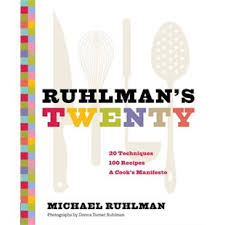 |
| Weeknight Cooking: Spanish Tortilla with Chorizo |
"At the age of barely three, I would rush outside whenever I heard Julie, our family hen, cackling to announce that she was about to lay. I would gently collect the still warm new-laid egg and hurry to the kitchen with it. My mother collected the eggs in a large bowl, which would be kept full during the summer; in winter Julie laid only one or two eggs a week – but we loved her just the same"
– Michel Roux, from Eggs
Quarry Lane Blog Relocation:
1) On the Yahara: http://riversidedrivefive.blogspot.com
Other Blogs by Troy Hess:
2) Quarry Lane Bistro: http://quarrylanebistro.blogspot.com
3) Quarry Lane Cafe: http://quarrylanecafe.blogspot.com
4) Founding Gardeners: http://ontheyahara.blogspot.com
Having finally (hopefully) mastered the delicate art of the soft two egg omelette, it seems natural to move on to other forms of cooking eggs, which Roux describes in the introduction to his book on the subject, "an undervalued food, invariably overshadowed by expensive, luxury ingredients." What I found out while cooking the Tortilla was as an important a lesson as any with eggs – it still seems that there will be those eaters who are attracted to the plain and natural taste of eggs themselves, and those who might want the added variety of seasoning and ingredients to enjoy. The traditional French omelette, for example, is an interesting case: it calls for
eggs, butter, Gruyere cheese and fresh chives, but the extras very sparingly, so that the egg most certainly still stands out as the primary flavor source. The Spanish Tortilla, on the other hand, is a dish that not only offers a variety of substantial extra components to an egg dish, but what it really does is invite the addition of just about anything you can think of. The recipe calls for chorizo, a Spanish style sausage, but one could
see adding just about any kind of meat you could think of, depending on taste or what is on hand. The recipe calls for parsley leaves, but why not spinach for the green? I diced up zucchini into cubes...asparagus? The other egg trick I gathered was how to cook a much larger volume of eggs than what you get used to for the 2-3 egg omelette. Even though the Spanish Tortilla called for only 6 eggs, I used ten because I was
feeding five of us and I wanted my dish to be thicker than the picture shown. The process in Roux's book calls for a pan fry, cooking from the bottom up, then a flip to fry the top portion. Because my dish was 10 eggs, I decided to go ahead and watch the eggs begin to cook from the bottom up on low heat for around 8 minutes, then I decided to go ahead and bake it in the 8-inch diameter, four-inch high deep pan for the rest of the time needed. I knew the bottom would already be close to done from the stove top heat; I would then check the top layer while in the oven for any of the standing egg liquid to firm, and then assume that it was done. It was, and done perfectly. The end product of my dish was somewhere around four inches high, it peeled from the non-stick pan, and cut and kept its form in pie shaped pieces for serving. Although there was much luck with this first time approach for the tortilla, the understanding of cooking eggs still centered around the hundreds of omelettes that I have cooked and those hard lessons learned in heat control while pan cooking thin linings of eggs. If I would have turned my stovetop dial to anything beyond my number three at low, there is no doubt that the bottom would have browned and rubberized. Any time after that in the oven would have made this condition worse. I kept the temperature low and watched the heat bubble up through the center and slowly firm up. This yielded a soft textured bottom that maintained shape and egginess. In the end, the tortilla was a wonderful pie 'mold' that held great ingredients: potatoes cubed and fried with red onion as base; polska kielbasa quartered and fried briefly with diced garlic and a dice of red pepper; a zucchini dice
added towards the end to add a crisp and moist green. I piled all of these cooked ingredients into the deep 8-inch pan, then dumped a bowl of 10 whipped eggs over the top, flattened it out, and let it sit. Throughout, I made sure to salt all of the ingredients, but if there was one obvious complaint to the dish, it would be that the three potatoes and 10 eggs still needed one more heavier touch of seasoning. Because I used kielbasa instead of chorizo, I lost some spice in the mix, and we all know potatoes generally need some help. Next time I could see slipping in olives or even a small hint of anchovies
to liven the dish, but what I did learn was one more step in perfecting the art of eggs.













































